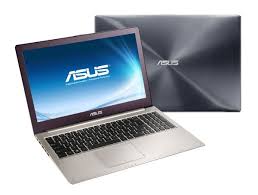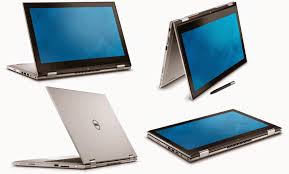Buying a Personal Computer: An Overview of my Experience
Buying a personal computer can be a stressful process. If you are just starting this process or have done it recently, you probably know the feeling. There are so many different computer options: “Do I go with a desktop or a laptop?”, “What do they mean by “memory?”, “The computer only has 126GB hard drive, how do I know if that’s enough?” “That computer is $900 but this computer is $1200, what’s the difference?” and “Dell vs HP or Asus vs Acer and what’s wrong with HP”? While these are all valid questions, knowing where to start is half the battle.
As an IT person, I don’t normally think about all computers and brands geared toward consumers (the University has a contract with Dell for enterprise or professional grade computers and that’s what we order for our offices) until it was time to replace my 2008 Dell Inspiron which took 20 minutes to start up and I avoided using whenever possible. Towards the end of June, I got the itch to buy a new computer and began 3 weeks of searching, asking co-workers what they would get if they were buying a new personal computer, looking at prices and specs and watching for sales.
During this time, I also had the benefit of helping a family member shop for a computer. This gave me another perspective to consider as the individual needs a computer for tasks such as checking email, online shopping, Microsoft Office and Print Shop. Her request for the computer was that she wanted “a larger screen but sleek and slender laptop”. For anyone that has researched this, you know this can be very challenging. For me, I wanted small, lightweight and low cost laptop.
The beginning of my journey began with exploring company sites like Asus, Dell (as OSU employees, we have access to Dell’s premier site which offers a few additional discounts for employees and students), Lenovo and HP. I fairly quickly eliminated Lenovo and HP because I wasn’t seeing the specs and the prices I was looking for and overall haven’t a lot of experience of their products, therefore, didn’t feel confident in purchasing their products. The Asus Zenbook was very appealing and I was pretty set on purchasing it. Amazon had some pretty awesome deals on it, some with touch screens, some without and decent specs such as an i5 processor, and 4GB of memory. But, as is often a complaint when shopping online, I REALLY wanted to get my hands on one! Feel it, see what kind of product it was, if it felt well made and if I liked the screen on it.
While I had explored the online store, I decided we need to go into one of the local mall stores to really get a feel for the products. (There are two Microsoft stores in Oklahoma, one in Tulsa at Woodland Hills Mall and one in Oklahoma City at Penn Square Mall). I also saw this as an opportunity to let the family member see the difference of a 15” laptop vs. the 13” in regards to not just screen size but sheer weight and bulkiness (I was really working to convince her the 15” was more than she wanted regarding size and weight!).
We went in and started looking at the various options. Unfortunately the store was no longer stocking the Asus Zenbook; however, they had a nice selection to look at. The Dell Inspiron 13” 2in1 stood out among the others. Don’t get me wrong, the Dell XPS 13 is really neat and one of the top laptops on the market. But the Inspiron 13 2 in 1 is a more affordable option with an i5 processor, 8GB of memory, 500GB Solid State Hybrid Drive, doubles as a tablet and it was on sale! It has often  been a consumer complaint that the 2 in 1 computers were poorly made at the henges with the tendency to break or snap as time went along. However, Dell seems to have helped remedy this as the henges are a solid component and does not seem flimsy at all. It’s also lightweight, weighing in at 3.58lbs and the screen feels larger than 13 inches. As much as I did not want to choose a Dell computer, I was pulled back in and so far, I have been very pleased with the computer! The employees at the Microsoft Store were extremely helpful and knowledgeable. They allowed us to take computers from one side of the store to the other to compare size and weight so that the family member who wanted the “bigger computer” could see the difference. They were also patient and didn’t push us at all. It should also be noted, that the family member saw what I meant by how much bigger a 15” laptop is and realized that the 13” screen size really wasn’t as tiny as they were expecting it to be.
been a consumer complaint that the 2 in 1 computers were poorly made at the henges with the tendency to break or snap as time went along. However, Dell seems to have helped remedy this as the henges are a solid component and does not seem flimsy at all. It’s also lightweight, weighing in at 3.58lbs and the screen feels larger than 13 inches. As much as I did not want to choose a Dell computer, I was pulled back in and so far, I have been very pleased with the computer! The employees at the Microsoft Store were extremely helpful and knowledgeable. They allowed us to take computers from one side of the store to the other to compare size and weight so that the family member who wanted the “bigger computer” could see the difference. They were also patient and didn’t push us at all. It should also be noted, that the family member saw what I meant by how much bigger a 15” laptop is and realized that the 13” screen size really wasn’t as tiny as they were expecting it to be.
As I conclude this post (which has become much longer than I expected it to be), I would like to note that I am not trying to advertise Microsoft or Dell, but instead explain the steps I went through in purchasing a personal computer and why I chose the one I did over the others. As my co-worker said “whether you purchase your computer at a Microsoft store, local brick and mortar store, or online, there are many options to consider. Knowledge is power, go forth and purchase.
Tips from a tech (2nd edition)
Working as a computer support specialist gives me the opportunity to solve many different problems. From time to time there are problems that cannot be solved. Other serious problems could range from destroying a computer to losing data, however if precautions are taken, these specific problems could be avoided.
One of the biggest problems I see on a regular basis is malware. There are many different ways that you can get malware including the following: searching for and installing free software that includes sketchy programs, updating existing software without removing additional programs from the installer, searching for free music or images, and opening attachments from unknown sources. These are just the tip of the metaphorical iceberg when it comes to getting malware. A lot of people believe that their antivirus program will keep them safe, however in most cases it will not be able to remove all if any of the malware. The best way to get rid of malware is to avoid it altogether. When installing updates, make sure that you remove any other programs that the update may try to install. When looking for free stuff online be very careful. In general follow the saying, “if something is too good to be true, then it generally is too good to be true.” If you are downloading a program, do research before installing it to see if it is malware or if it is a good program.
Flash drives are one of the most useful tools when it comes to transferring data from one computer to another. They are extremely portable and they can hold an incredible amount of data. However that can also be a huge problem. Because they are so small and portable, they are very easy to lose. There also is the possibility of the drive being damaged and no longer working. This makes it very important to back up the data on your flash drive. This doesn’t have to be an elaborate backup system, simply create a folder on your computer and copy all your contents from your flash drive to that folder every once in a while.
All computers, desktops and laptops, can have problems with heat. If a computer does not have adequate air flow, it can get hot enough to melt the solder off of the motherboard (solder melts at 183°C or 361°F.) If you have a desk with an enclosed PC compartment, make sure that there is a way for air to move through it. If you open the door to the compartment and feel a lot of heat coming out, that is a bad sign and you should reconsider where your computer is located or find a way to increase the air flow. It is easier to tell when a laptop is getting hot because the bottom of the laptop will start to warm up. It is fairly normal for laptops to get warm when you are using them. What you should never do is put the laptop on top of a pillow or anything that will block the vents on the bottom of the laptop. If the laptop is running too hot for you to hold, you should consider getting a cooling pad (sometimes called a chill pad.) This will give the laptop a flat surface to rest on and also help cool the laptop by blowing air into the vents on the bottom of the laptop.